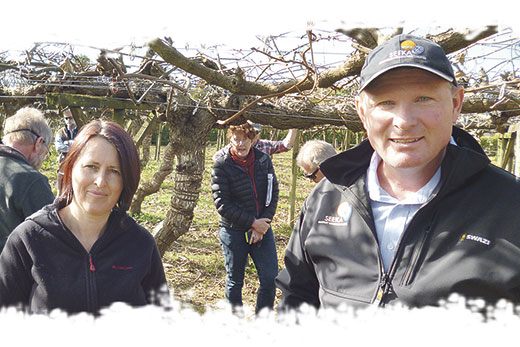While world demand for organic kiwifruit is growing, New Zealand’s production is declining – making now a good time for conventional growers to consider switching at least some of their production to certified organic, says Seeka’s organic category manager Hans Dirkse. “Organic fruit does achieve $1.40 to $1.50 more per tray than conventional Hayward but on average organic orchards produce fewer trays per hectare, which has deterred many growers from going organic. “However, with increasing demand for organic fruit it is worth growers considering converting at least some of their orchard blocks, as Bio Gro will certify parts of an orchard. In effect, that gives growers the chance to diversify their business.” Hans says while organic Hayward orchards don’t have the same high production as those using conventional methods, that’s not the case with the new gold variety G3 which produces impressive crop loadings without the use of Hi-cane to promote bud burst. Currently, there are about 120 certified organic kiwifruit growers in New Zealand and Seeka growers, or the orchards it leases or manages, yielding about 1.1 million trays – a little more than one-quarter of the industry. “Many growers have been certified organic for decades. But the industry has also been losing organic orchards either to new owners, who have decided to grow using conventional methods, or orchards have been sold for re-development into housing.” Young families Most of Zespri’s organic fruit goes to Europe, the United States and Japan; and Hans says there is growing worldwide demand for organic foods, especially from parents of young families. Growing kiwifruit organically does require a shift in thinking and practices for those new to organics but Hans says it doesn’t have to be a daunting prospect and in fact can bring a number of advantages, including creating an environment which is more pleasant to live and work in. “It also appears the use of compost and retaining a longer sward between rows, as is common practice in organic orchards, may have a beneficial effect on the control of the vine disease Psa-V.” Newcomers to the industry, Tracey and Sam Kain of Te Puna bought their three hectare orchard two years ago and their purchase decision was driven both by the orchard’s location and the fact it is certified organic. Mature Hayward “We live right next to the orchard and there’s no way I’d bring up my children that close to a conventional orchard,” says Tracey, who opened her orchard for a Seeka organic field day. The orchard, which has 2.5ha of mature Hayward vines and half a hectare of two-year-old G3 vines, is managed by Graeme Shearer of Katikati Orchard Management Limited on behalf of Seeka and the Kains. It has produced an average of 10,000 trays per hectare and Graeme puts that performance down to a number of factors, including winter pruning. “We set out to prune to 35 buds per square metre, to encourage buds inside the wire and tie the canes down flat.” The orchard does have some Psa-V and Graeme is also big on orchard hygiene, insisting that the pruning teams sterilise their gear with sanitising fluid carried in bottles in their aprons, between every support beam, or if they have cut out Psa-V. Graeme’s pruners have been with him for up to 12 years and operate the company called RS & HS Horticulture. They are quick and efficient and produce the results he and growers want.



0 Comments
Leave a Comment